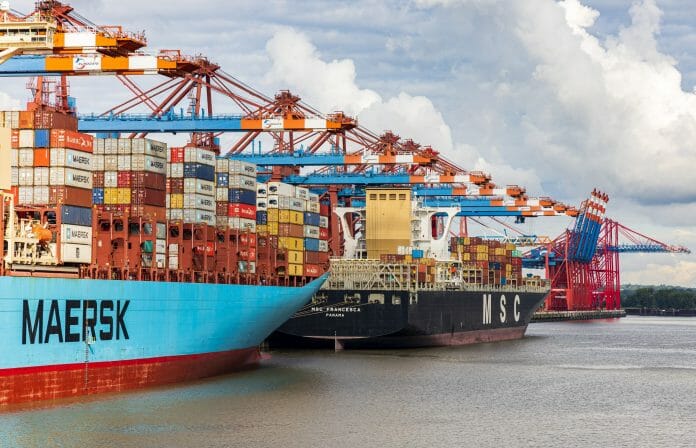By Prof Dr Evelyn S. Devadason,
Trade agreements, comprising (FTAs) and preferential trade agreements (PTAs), have expanded in terms of numbers and complexity. The astounding growth of bilateral trade agreements (BTAs), regional trade agreements (RTAs) and cross-regional trade agreements (CRTs) has sparked conversations on whether multilateral trade is approaching its end. FTAs, recognizably, are an alternative avenue to pursue trade liberalization in the advent of stalled multilateral negotiations.
Instead of debating on the future of multilateralism, the focus should be on the content of these FTAs, which have evolved significantly to establish new trade rules on emerging issues.
To reflect new forms of trade engagement or rather the way in which businesses are conducted today, recent FTAs contain dedicated (or standalone) e-commerce chapters. Among the most consequential of e-commerce chapters are provisions related to nondiscrimination and market access, e-commerce enablers and paperless trading, users’ protection, and cross-border data flows.
Singapore, Chile, and New Zealand have taken a further step in digital trade negotiations to sign the first of its kind “digital-only deal” agreement, the Digital Economy Partnership Agreement (DEPA) on 12 June 2020 (which entered into force on 28 December 2020).
Another provision that has gained traction in FTAs is the chapter related to trade and sustainable development (TSD), comprising labour and environmental provisions. The sustainability agenda in fact made its way into FTAs, mainly because it is easier to reach a consensus on such sensitive issues with greater depth and wider scope within a limited number of participants, than would be possible in the multilateral context.
To date, approximately 29% of the total global RTAs in force include labour provisions.
In moving the FTA debate forward, a more meaningful question to ask at some point is, what can “deep” FTAs promote? To identify what deep FTAs can achieve in practice, it is important to consider the breadth, along with the depth of the agreements.
Active proponents for the inclusion of the TSD, the United States (US) and the European Union (EU), defend that FTAs serve as an institutional push to introduce formal regulations on sustainable development at the national level.
While the inclusion of the modern trade agenda provisions justifies the relevance of such agreements, what follows are fundamental objections to legally enforceable commitments from some participants of these Agreements that want to retain their policy space to regulate these emerging issues in attempt to balance their regulatory, economic, and social objectives. Alternatively, countries that are on survival mode, want to side-line these new issues.
The breadth of some failings has already been documented, thereby revealing the limited effectiveness of “deep” FTAs. Yet, this does not preclude the fact that new issues need to be tackled by the parties of the Agreements. Most agreements, especially those that have fewer binding commitments, provide capacity building via a section for cooperation, which includes development (technical) cooperation, technical assistance, dialogue/ exchange of information and best practices, among others. Economic cooperation through FTAs help their
Members promote domestic policy change or regulatory reform to close the compliance-commitment gap.
Other gains from FTAs, such as improvements in market access, however, hinges upon the depth of the agreement, which refers to provisions that are enforceable, not obligations, not aspirational commitments, or recommendations.
A high degree of enforceability of provisions is necessary to prevent the protectionist use of ‘behind-the-border’ regulations by parties to the Agreement. A case in point is to compare the Comprehensive and Progressive Trans-Pacific Partnership (CPTPP) Agreement with the fewer binding commitments of the Regional Comprehensive Economic Partnership (RCEP).
The CPTPP has the capacity to deliver significant gains to trade and assume smaller non-discriminatory spillover effects of non-tariff measures due to the enforceability of its chapters. For example, more than 66% of the technical barriers to trade in the CPTPP Agreement are found to be enforceable. A general sense of pessimism however pervades the less ambitious and accommodative stance of the RCEP.
The enforceability and transparency in the application of domestic regulations, in turn, can provide greater scope for regulatory cooperation among the Member countries. Though the RCEP may provide the opportunities to streamline some standards, agreeing to a common base of standards that is minimum and acceptable by all Members of the Agreement may in fact be an ostensible challenge.
That said, attaining robust regulatory cooperation, however, still depends on the extent of regulatory dispersion between the Member countries in the Agreement.
Though the feasibility of regulatory cooperation in the form of equivalence arrangements in RCEP remains questionable given its fewer binding commitments, the consolidation of the multiple rules into a common set of rules (one certification of origin for trading in the region) speak well for facilitating trade among the 15 like-minded participants.
The RCEP, therefore, is still considerably important for reinforcing regional supply chains, especially when the cross-country linkages are already well established within the Members of the Agreement. For example, 22% of the total foreign value-added exports of RCEP are contributed by its own Members.
In general, FTAs are important for ensuring better market access, achieving regulatory compatibility, and enhancing supply chains. In fact, the objectives of FTAs are also expanding, from promoting trade liberalization, trade facilitation and now trade resiliency, as there are already calls for FTAs to include “crisis response provisions.”
Ultimately, the binding aspects of the agreement may be an overriding requirement for deriving significant gains or mega benefits for its participants.
Deep FTAs, however, are “engines of change” as they provide for different arrangements to facilitate the implementation of commitments related to the modern trade agenda. Though the treatment and location (preamble, core text and side agreements) of the new provisions still varies across agreements, they have invariably become a widely accepted part of these agreements.
Evelyn S. Devadason is Professor at the Faculty of Economics & Administration, University of Malaya, and Vice-President of the Malaysian Economic Association.









